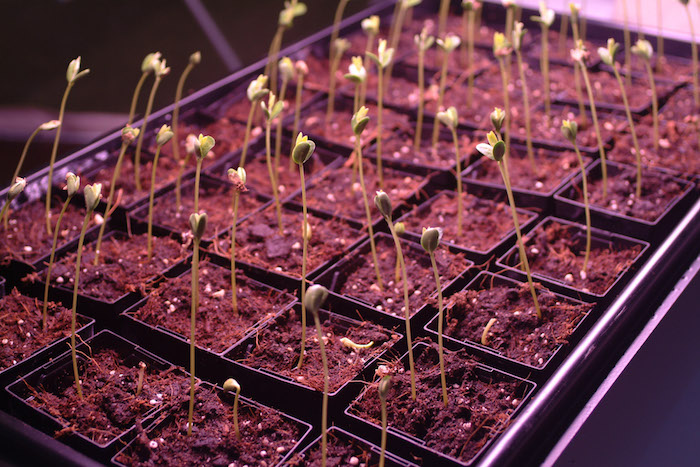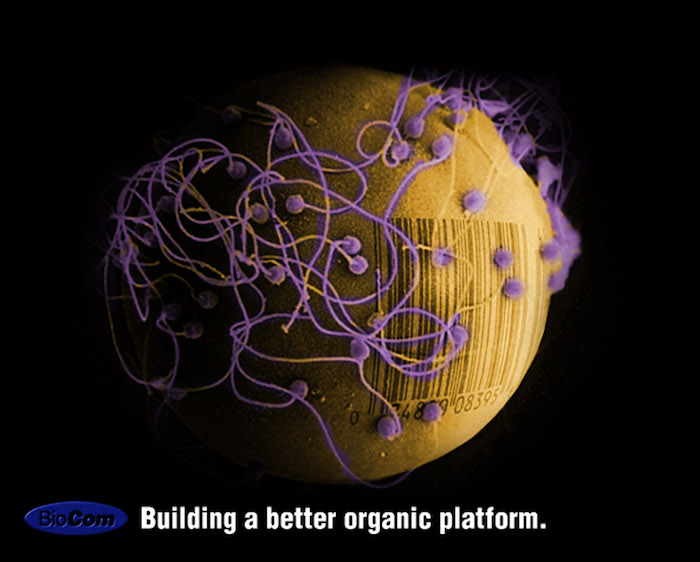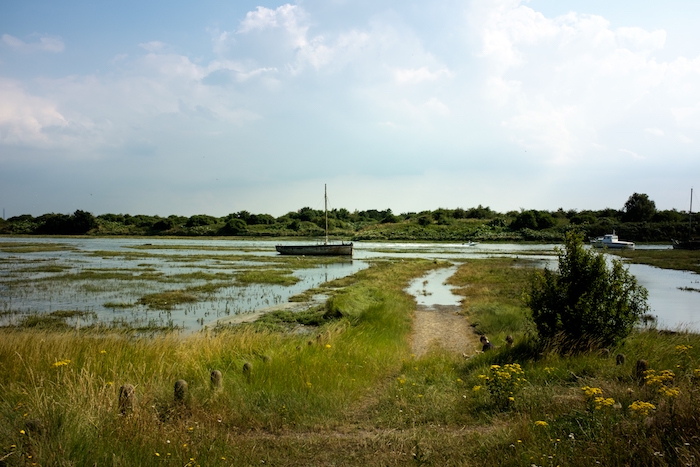Any Trait of Adaptability Can Become a Trait of Susceptibility
Any Trait of Adaptability Can Become a Trait of Susceptibility
As life and its opposites become increasingly indistinguishable, where is power located? Can it be felt or resisted from a physical standpoint? How can the figure of the artist-as-amateur intervene or even approach power systems embedded in new technosocial regimes? In this interview, Kurtz describes CAE’s methods towards this end. “Technology,” as he says, “is a genie that will not go back in the lamp.” CAE’s long project has been engaging the genie.
Elvia Wilk: The 2005 festival theme, “Basics,” is loosely picked up on in a strand of events at the 2017 festival based on the “elementals” of media practice (such as the Elemental Middle Session). Basics was meant to be forward looking—considering “next-level basics” as opposed to “back to basics”—asking what humans really need to frame our lives (security, cultural rituals, aesthetic practice, social mediation, digital technology) in the future. The focus on "elementals" seems partially driven by an urge to look back in time, to reduce or simplify such questions in the face of overwhelming amounts and speed of information. Both of course essentially try to deal with the now. Is there a path to address the “basics” of life and artistic practice that is neither regressive nor future-obsessed?
Steve Kurtz: I think your question answers itself. CAE is always present-oriented, and works with what is available now on problems that are happening now. We have very little respect for futurologists, because they are inevitably wrong. In my youth I read Alvin Toffler’s Future Shock and knew, even in my immaturity, that a new racket had been discovered—verbal blather with no accountability. Unless the person is like Jules Verne and working off of mathematical models that require minimal assumptions, the predictions are in all probability not worth the paper they are printed on. We may as well go to the fortune teller.
CAE does not care for regressionists either, because culture has no reverse. Technology, once made, is a genie that will not go back in the lamp. We cannot rid ourselves of new technology and the behaviors that accompany it. Once there are cluster bombs, we have them. We can try to control their use, but we will not stop them. We have GMOs now. They are not going away, but, like bombs, we can choose to focus on minimizing the use of the worst ones. We should stay in the present as much as possible, and pick our battles wisely.

Securing your 2005 festival participation was logistically complicated, due to the legal process you were embroiled in in the US. Supporting freedom of movement despite political restrictions is and continues to be one vital job for arts institutions, within the scope of their abilities. What do you see or predict to be other important roles of cultural institutions as cultural practice increasingly comes under threat?
The primary role of cultural institutions in the upcoming years will be to survive without becoming another authoritarian voice. I don’t believe they will be leading any kind of cultural charge (that would be institutional suicide), but with careful subterfuge they can avoid contributing to making the situation worse. Between austerity and ideological intolerance, the near future looks very bad for diverse, experimental, and resistant cultural practices, and I am sure the institutions will have to be somewhat complicit in reducing exposure of such practices if they want to survive the current political tendency. Hopefully, subversive work will find ways to hide in a manner that sympathetic institutions can occasionally present it, and still have plausible deniability as to the nature of the work. In the US, science fiction in the 1950s is a good example of this strategy.
In your 2005 panel presentation you argued that biotechnology had become a new “means by which power could bombard the body… It was no longer an external force; it was a way that formations of power and their values could be inscribed directly into the flesh as a creation of a predisposition that would better fit the needs of capitalism.” This embedding of biopower into the body has only accelerated since, as much as through software (e.g. the temporal rhythms of the internet) as hardware (intake of genetically modified food). If power was already “no longer an external force” in 2005, where is it located now?
Power formations are very resilient, so people must endure a number of them simultaneously. For example, we currently live in a society of discipline, control, and post-control—only the intensities shift over time. The bombardment of the body with representation to both control and discipline is ongoing into the foreseeable future. With molecular biology, synthetic biology, and contemporary reprotech, the flesh itself can be coded, and these codes will be set to create predispositions that better lend themselves to the needs of capital. We become good workers not just by being told to do tasks for rewards if we comply or punishment if we fail, but we can also be made more receptive to this socializing information. Power now can work from the inside out as well as outside in. What I didn’t know in 2005 is that the process of creating this more capital-friendly body would proceed so slowly. At the time I thought the use of reprotech by people looking to reproduce would be far more common and far more normalized then it presently is.
In your talk you described art’s relationship with science at the time as mostly an aestheticization, “a big pile of fetishes.” This is what led to many of CAE’s projects that you presented, such as Flesh Machine (1998), concerning the traits of a “suitable” egg donor, Cult of the New Eve (1999–2000), a mock-cult borrowing the Biblical rhetoric of the pharma industry, and Contestational Biology (2002), intervening into the bio-engineering of plants. With these projects in mind, could you articulate the difference between aestheticization and intervention?
We need only look to bio-art to see the difference. Most of it follows modern standard procedures for creating art. Master the materials of one’s specialization, and create objects or processes attractive to nonrational characteristics of a viewing or participating subject (and if the creation can dual function as a commodity all the better). The novelty in this case is that the artists are using materials and processes normally associated with science. CAE has no interest in this. What CAE is interested in developing is an informed, resistant biopolitics, and we use art and design as an engine to move participants/viewers in that direction.

One of my favorite quotes from your 2005 presentation is: “Any trait of adaptability can become a trait of susceptibility.” You were speaking of intervening in power systems through the metaphor of genetic adaptations in plants. What traits of adaptability might become traits of susceptibility in today’s political landscape?
When CAE is speaking about the Flesh Machine or contestational biology, we are generally speaking quite literally. (Using models of nature to describe social or political dynamics usually does not end well.) We developed the principle you quote as a battle cry for rogue biologists to represent a practical, material tactic that could be used to undermine or destroy capital’s recombinant, pollution-for-profit products. I suppose if we were to translate this tactic into a cultural context, it would be something like playing a person’s strength against himself.
Another panel speaker on the Basics panel, Claire Pentecost, said at the beginning of her talk that “for a long time the history of art was all about mediating human relationships with nature.” The exhibition at transmediale 2017, “alien matter,” explicitly reflects on this relationship and how it has (not) changed. If you agree that historically the function of art was to mediate human relationships with nature, is it still the case? What vocabulary might we use to understand this relationship given the scale of current natural destruction?
Yes, that assertion is true, although perhaps a little overstated. Art mediated all kinds of relationships—social, political, and “spiritual,” and still does. Depending on how broad a definition we want to assign art now, we can see it as more marginal or more intense than ever. CAE uses a very broad view—the production of representation. Our relationships are more intensely mediated by representation than ever before.
I don’t think there is a language that can help us truly understand the destruction currently taking place. The scale of the problem is so large that we can only understand it as a very amorphous abstraction. It’s much like economic inequality—the numbers are too big to be meaningful, the suffering too vast. As pessimistic as it may be, I believe that only immediate crisis will provide incentive necessary for effective action. Don’t misunderstand me, I am not an accelerationist like many radical greens. I don’t want to see this happen, but to transform my thoughts into an oversimplified generalization, humans are reactive, not proactive.

In regards to artistic intervention into other fields of knowledge, you said: “It’s only the amateur that can speak to the corruption.” In recent years I see a curious and damaging appropriation of the concept of the “amateur” in politics—in the US, the figure of the Washington “outsider” who is able to “disrupt” the status quo by dint of having no political experience at all. The difference of course is that the “political amateur” indeed has a masked political agenda, whereas the artistic amateur is hopefully not serving political interests. Do you find this political reversal of the notion of the amateur has affected the way the artist functions in relationship to other disciplines as well as systems of power?
For CAE, an amateur is not someone without knowledge or experience. An amateur should have a great deal of both, combined with a concern or passion for the subject. What they are not is a professionalized specialist having expertise in a very specific area of production. Because amateurs are thereby marginal to the political economy of the discipline, they can function in a different manner. I would not soil the term by associating it with the grifters and demagogues who currently populate US politics.
In your joint event with Johannes Paul Raether at transmediale 2017, the "Strange Ecologies" keynote, you dealt with life’s beginning and end: birth and death. You focused on necropolitics in relation to environmental struggle. You've written that “there is no language of death beyond the categories of atrocity and extinction”—which I think often manifests in artistic practice through dystopian fantasies. Could you speak to some contemporary practices, including your own, that counter this dystopian vocabulary? Is the difference between approaches one of optimism versus pessimism, or is there another way to frame it?
I have no good news here. For most people in the world, dystopia is here, and for the rest a mild dystopia that is getting worse. The optimists (solutionists, free market fanatics, posthumanists, etc.) are delusional or looking after some point of self-interest. Quite honestly, I think we are due for a revival of pessimism. Schopenhauer makes more sense every day. In the early ’60s, after a life of Hegel and Marx, Max Horkheimer returned to his interest in Schopenhauer. After world wars, a great depression, genocides, and failed revolutions, it’s not surprising that he began searching for a way to understand such mass suffering. Moreover, today, we need to revisit the nonrationality of the subject, and Schopenhauer is again of help. I will, however, buffer my pessimism with CAE’s favorite aphorism by Antonio Gramsci: "Pessimism of the intellect, optimism of the will."
Watch the "Strange Ecologies" keynote:
Watch the "Basics Live" panel:







